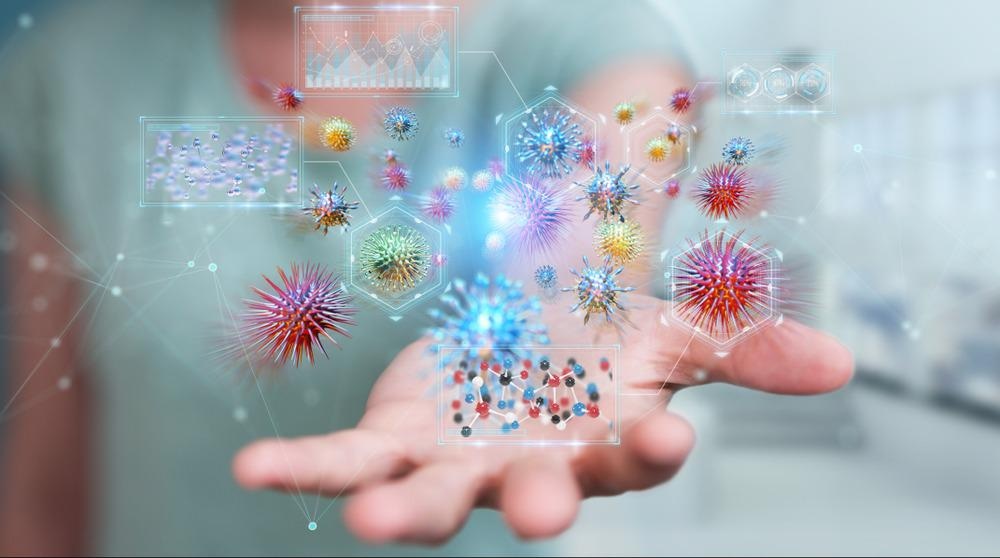Nanotechnology has revolutionized many key industries – from the energy sector, to medicine, to agriculture, to sports. Nanoparticles have enhanced physical, chemical, and mechanical properties that make them incredibly versatile. However, the physical and chemical ways nanoparticles are produced is expensive and far from environmentally friendly.

Image Credit: sdecoret/Shutterstock.com
The biogenic synthesis – that is made from or by life forms – of nanoparticles is emerging as a sustainable, cost-effective, and eco-friendly means of production that negates the need for the harsh chemicals and toxins currently required for physiochemical synthesis. Furthermore, using living systems such as plants, bacteria, and fungi lowers the energy required for these processes, even taking them right down to ambient environmental conditions.
Researchers have been investigating how microorganisms can be used to generate green nanostructures, such as iron nanoparticles, in a sustainable and eco-friendly process. They have focused on the green synthesis of nanoparticles from plant extracts, fungi, or bacteria – particularly their enzymes. These act as a reductive agent for a metal complex salt and ultimately generate metallic nanoparticles.
Going Green
Nanobiotechnology merges the sciences of nanotechnology, microbiology, and biotechnology; it uses microbes to synthesize nanomaterials through biotechnical methods.
Current methods of producing nanoparticles offer a good rate of production and a well-controlled size and shape. Still, they are expensive both in terms of financial cost and energy consumption. Their creation also requires the use of hazardous chemicals and produces large amounts of bio-waste.
Greener synthesis is a growing area of interest that could not only make the process more economical but more eco-friendly too.
There are a number of ways to synthesize nanoparticle systems from plants, bacteria, and fungi, which are cost-effective, exhibit a low toxicity profile, and are biocompatible, which is particularly important in medical applications.
Plant extract based synthetic procedures has drawn much interest over conventional methods to synthesis nanomaterials. The flower Helianthus annuus – the common sunflower – has been used to create gold nanoparticles, while the plant Trianthema decandra has been used to produce both gold and silver nanoparticles which have been used in biomedical applications.
Natural polysaccharides – a type of carbohydrate found in food – are also being explored as a means of creating nano- and microparticles.
Chitosan, for example, is a sugar found in the hard outer skeleton of shellfish, and has been used to make nanoprobes, nanoparticles, and magnetic nanoparticles that can be used in targeted cancer imaging or in targeted drug delivery for cancer treatments.
Microbial Synthesis
Synthesizing nanoparticles from microbial origin offers a quick growth rate and a low cost, and allows nanoparticles to be cultivated at ambient environmental conditions, thus making it more eco-friendly.
According to researchers, nanoparticles of inorganic materials can be prepared via reduction mechanisms through intracellular and extracellular routes thanks to their survival capability in metallic surroundings.
The metallic ions present in the environment are trapped by microbes, and with the help of enzymatic activity and microbes, convert these ions into their elemental forms.
Fungi, in particular, are gaining interest as it offers a higher yield of nanoparticles thanks to their larger biomass and ability to eliminate toxic and hazardous chemicals.
Enzymes and Nanotechnology
The use of enzymes with nanotechnology is also receiving much attention as it produces higher activity and allows the enzyme to be recycled and reused. This has importance in the bioremediation of industrial wastewater.
Nanotechnology has opened new avenues for removing water pollutants; such pathways are more efficient than other means because of nanoparticles' size, high surface area to volume ratio, and unique chemical properties. However, taking an eco-friendly approach to their production can increase its eco-credentials.
Using enzymes with nanotechnology can help make the nanomaterials less harmful to the environment by minimizing their cell interaction through steric hindrances (to slow the reaction and control selectivity) and decrease the surface energy.
Furthermore, enzymes provide an additional individuality of catalysis, making nanomaterials more adaptable and efficient in bioremediation and green energy production. Immobilized enzymes are highly stable due to resistance in unfolding and less vulnerable to diffusional constraints. They can also be used in multiple cycles with improved kinetics.
Shortcomings and the Future
Nanobiotechnology is still in its early stages, but it has great potential, particularly in drug delivery and wastewater remediation. Researchers suggest that integrating microorganisms and enzymes with nanotechnology offers a greener approach that minimizes the risk associated with chemically synthesized nanoparticles.
Nanobiotechnology is a safe, eco-friendly, and economical way to produce nanoparticles, but there is still some way to go before it is routinely used. Nanoparticles formed using green synthesis methods can be time-consuming to produce, and there are still difficulties in controlling their size and shape, making them limited on a commercial scale.
However, the application of these easy, efficient, microorganism-assisted nanotechnology techniques will be a stepping stone for industries. Still, more investment and support are required to nurture the powers of nanotechnology for sustainable and economical production.
Continue reading: Synthesizing ZnO Nanocomposites Using Pomegranates.
References and Further Reading
Dixit, M. & Shukla, P. (2020) Microbial Nanotechnology for Bioremediation of Industrial Wastewater, Frontiers in Microbiology. Available at: https://www.frontiersin.org/articles/10.3389/fmicb.2020.590631/full
Gupta M., Seema K. (2021) Living Nano-factories: An Eco-friendly Approach Towards Medicine and Environment, Bio-manufactured Nanomaterials. Available at: https://doi.org/10.1007/978-3-030-67223-2_6
Bhardwaj, B. et al (2020) Eco-Friendly Greener Synthesis of Nanoparticles, Advanced Pharmaceutical Bulletin. Available at: https://www.ncbi.nlm.nih.gov/pmc/articles/PMC7539319/
Disclaimer: The views expressed here are those of the author expressed in their private capacity and do not necessarily represent the views of AZoM.com Limited T/A AZoNetwork the owner and operator of this website. This disclaimer forms part of the Terms and conditions of use of this website.